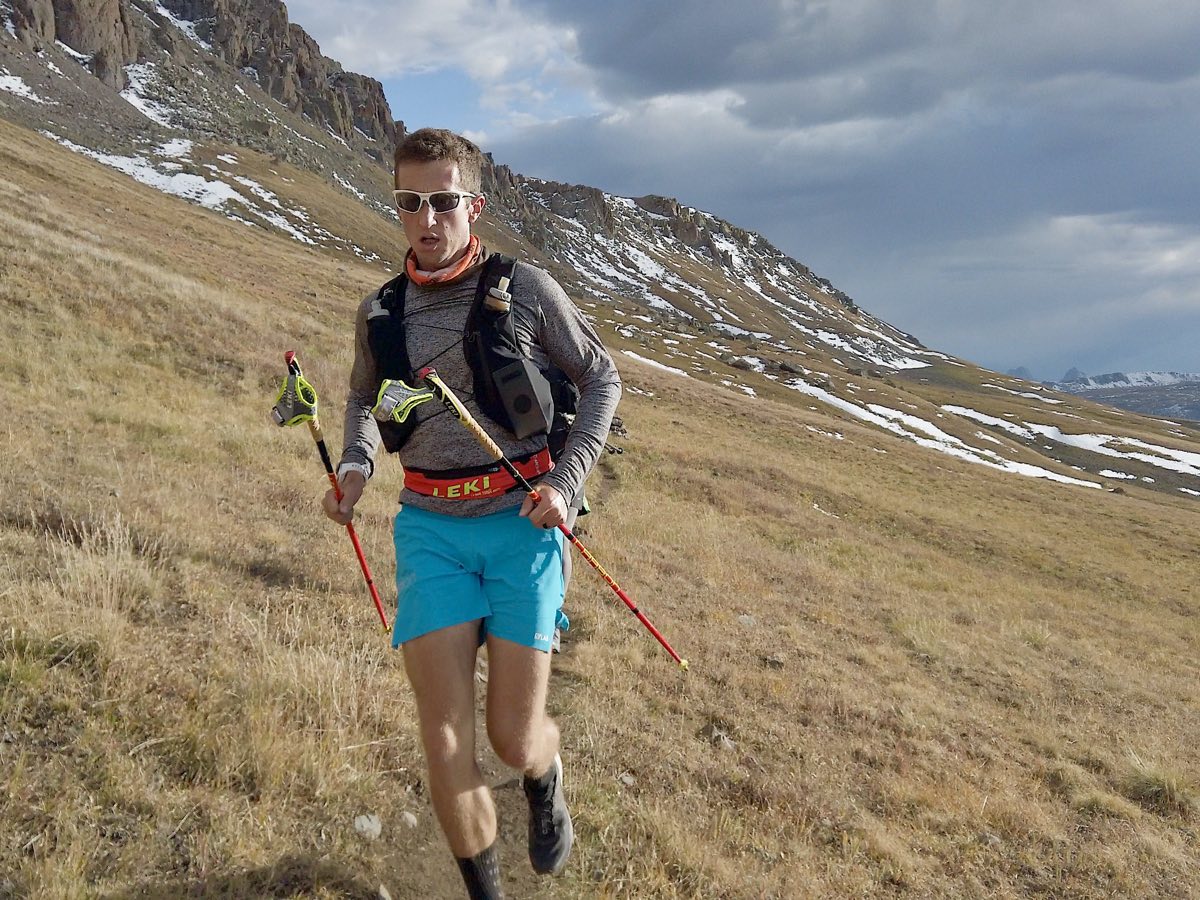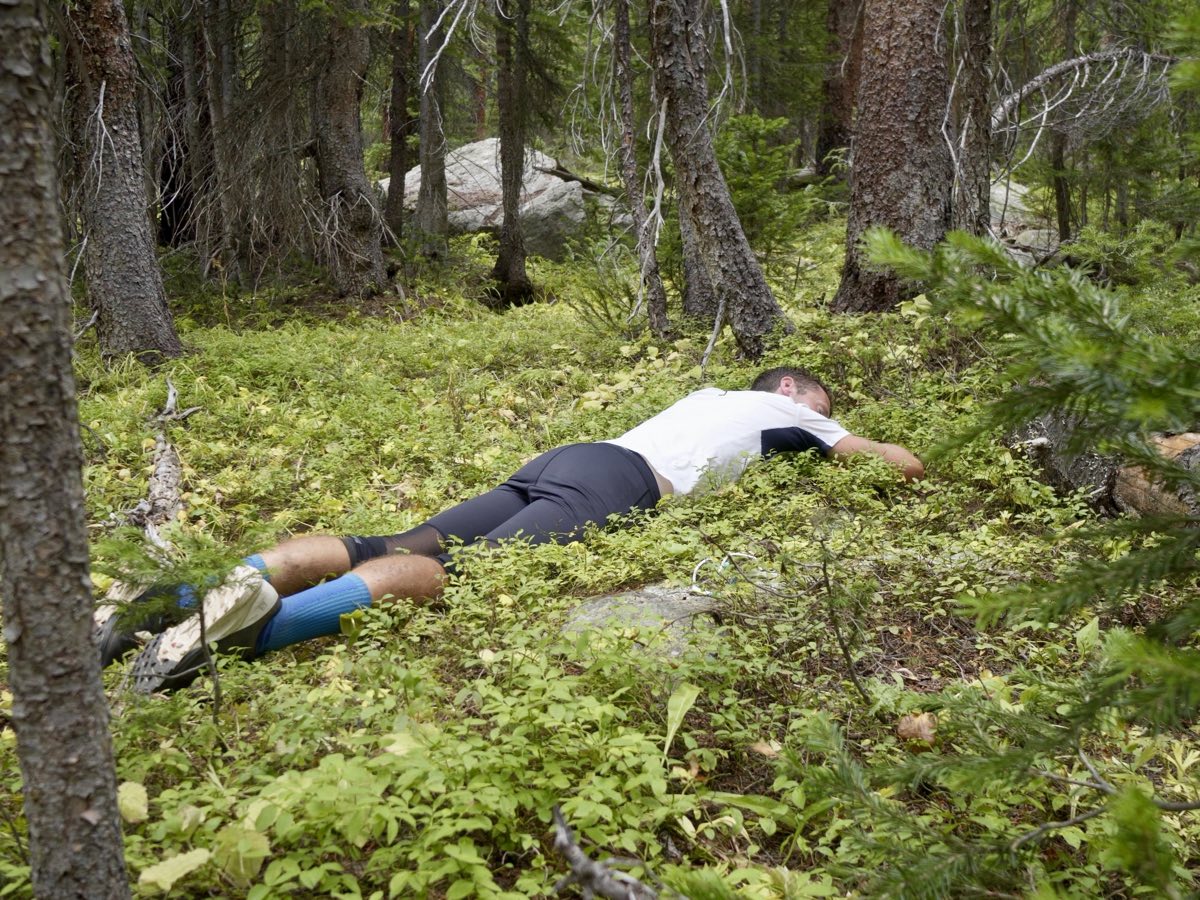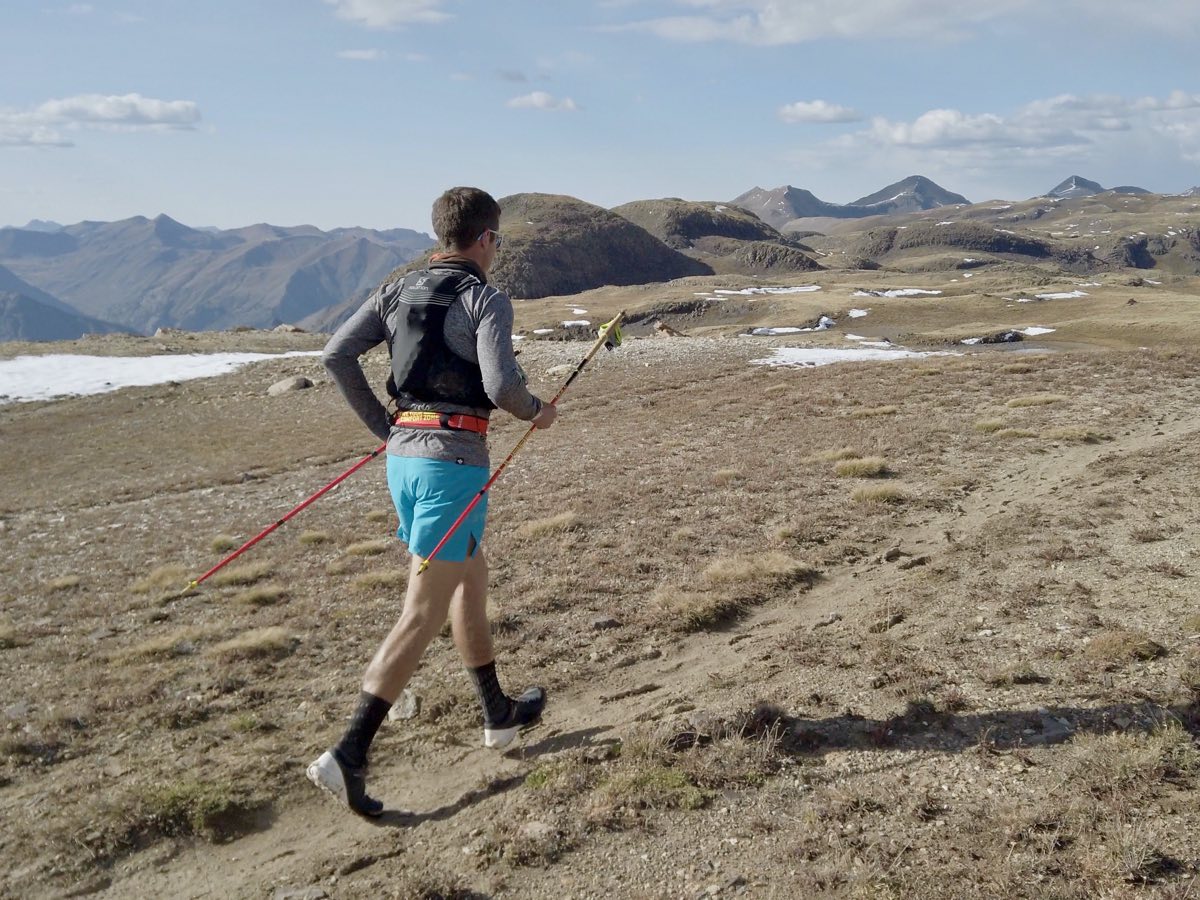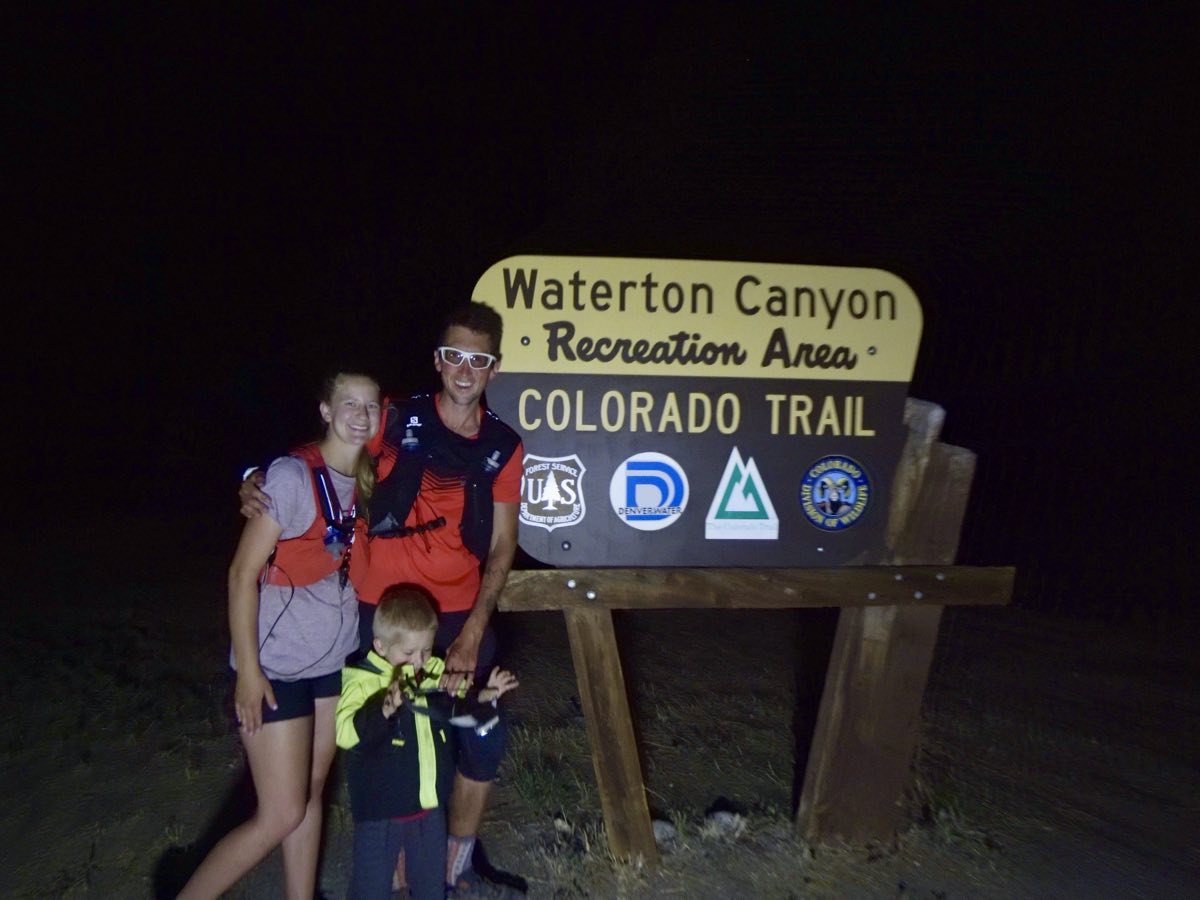On September 21, Mike McKnight set a new men’s supported fastest known time (FKT) on the Colorado Trail while traveling west to east and by using the trail’s Collegiate East variation. His time of 7 days, 13 hours, and 16 minutes bettered the previous record set by Scott Jaime in 2013 of 8 days, 7 hours, and 40 minutes. In this interview, Mike talks about what inspired him to attempt the almost-500-mile Colorado Trail, what his support team was like, the highs and lows of his effort, and the fun hallucinations he experienced over a week of sleep deprivation.
iRunFar: Congratulations! It’s a few days after your finish. How are you feeling?
Mike McKnight: Thank you! This is the most exhausted I’ve ever been. I’ve had three nights of really good sleep, but I just wake up every morning exhausted. I feel like I’ve dug myself into a hole right now.
iRunFar: The fatigue will probably take a little while to climb out of.
McKnight: Yeah. Me and a buddy did a 300-mile route a couple months ago. I felt like I was barely getting over that by the time I started this attempt, so I imagine this will take a lot longer.
iRunFar: Can you share a little bit about that 300-mile adventure?
McKnight: We ran the Bear 100 Mile course backward. And then we created a 100-mile route to the start of the Wasatch Front 100 Mile course. Finally, we ran the Wasatch 100. Utah has a holiday called Pioneer Day and that was on July 24. We finished on that holiday.
iRunFar: Most of the trail-running and ultrarunning community has probably come to associate you with your super strong 200-mile performances. Jumping up to 500 miles is a big leap, but you had that 300-mile adventure in there. What is inspiring you to keep going up in distance and time?
McKnightt: Last year when I did those 200 milers, I learned that I’m not necessarily a fast runner in a 50-kilometer or 50-mile race. I am not quick enough to compete well with that. With those 200 milers, I just decided to keep pushing that stuff. I was intrigued when Karl Meltzer went for the supported Appalachian Trail record. Obviously that’s an even bigger jump than 500 miles, but I’ve always been curious about those multi-day attempts. Once I saw Courtney Dauwalter doing the Colorado Trail, my interest was piqued.
iRunFar: That might answer my next question of why the Colorado Trail. Did it come about courtesy of COVID-19 or Courtney or something else?
McKnight: Most of my life I’ve had a typical nine-to-five job, and I’m jobless now because of COVID-19. So I figured that the Colorado Trail would be a lot easier to do right now. I watched Courtney in her attempt on the Colorado Trail. Through talking to her and how contagious her attitude is–basically she said she thinks that there’s so much potential on the Colorado Trail and she encouraged me to go for it.
iRunFar: I wanted to ask about your logistics and organization. I got to pace Courtney for a section through the San Juan Mountains during her attempt earlier this year and I also paced Scott Jaime through a section of the Sawatch Range when he set the record in 2013. From the view of a pacer who comes and joins the main crew for a little while, I’ve seen how intense the organization and logistics are. Can you talk about how you multiplied what you’ve done for your 200 milers for this?
McKnight: This is probably going to be a shorter answer that what you’re thinking, but I’ve learned that the less preparation I put into something, the better I do at it.
iRunFar: [laughs] Okay!
McKnight: For example, I honestly had no idea that the entire trail is essentially above 10,000 feet. I thought after a couple days in the San Juans I’d be down to 7,000 or 8,000 feet altitude.
iRunFar: That’s really funny.
McKnight: I didn’t do a ton of preparation. Basically my crew chief, Ben Light, he is just a stellar individual. When I told him I was going to do the attempt, he asked if he could be my crew chief. By that same night, he had a document with all the crew spots, elevation gain on each segment, just this big Excel spreadsheet that he put together. Essentially he did everything for me. I threw a ton of food together and over-packed and Ben took care of the rest for me.
iRunFar: Out of curiosity, do you like surprises? Like not knowing you’re going to stay at high altitude for most of the Colorado Trail? [laughs]
McKnight: [laughs] I like surprises, but that one I did not like. It was a shock at first, but there wasn’t much I could control, so it didn’t bother me too much. It just made a lot more sense as to why I was struggling so hard with my breathing.
iRunFar: Sleep. It looked like from following your GPS tracker that you tried your best to rest while it was dark most nights.
McKnight: Yep. I planned to sleep essentially whenever I hit my crew for the first time at night. Sometimes that was 11 p.m. and sometimes it was 2 a.m. The most at one time I tried to sleep was an hour and a half. All the other times were power naps on the side of the trail. About every other night, I slept for an hour and a half. And then all the other times, just the 10-minute power naps. Over the seven days, I slept a little over five hours.
iRunFar: Wow!
McKnight: I tried to sleep, but in the 200 milers, I learned that I’m not a good sleeper. My mind starts turning whenever I try to sleep. Here though, the altitude helped. I was completely wrecked and able to fall asleep pretty quick. But after about an hour or so, I naturally woke up and my head started turning and I wasn’t able to fall back asleep.
iRunFar: In terms of the speed record, it looked like you ticked off little bits of time here and there and slowly built a lead on record pace. Was that intentional or is that just how it worked out?
McKnight: That’s just how it worked out. The previous record was 8 days and 7 hours. My big goal was to do it in under a week, so 6 days, 23 hours. That meant 70 miles a day. So I was just trying to shoot for as close to 70 miles a day as I could.
iRunFar: Got it.
McKnight: Day one was 80 miles and day two was 63 miles. Then it was consistently around 65 to 68 after that.
iRunFar: It sounded like you were on pace for your goal for half the week? When did it start to get really tough to stay on pace?
McKnight: [laughs] Well, this whole thing was tough.
iRunFar: [laughs] Ha!
McKnight: Usually I have a day where I feel really good. I don’t feel like I had that this time. The first two days, I was expecting not to be great, because of the high altitude at the San Juans. I feel like I pushed myself a little too hard there. And once I got out of the San Juans, I was having a hard time keeping up with my breathing and I was hacking up this nasty phlegm. I was having a hard time sleeping. And I was having a hard time with my nutrition, which is rare for me. I think this is all part of the altitude that I’m not used to. Basically I just went as hard as I could for as far as I could and then tried to maintain for the rest of it.
iRunFar: Can I ask you a little bit about your food plan? You eat fewer carbohydrates than many ultrarunners. How did you fuel?
McKnight: Have you ever heard of Tucanos? It’s a Brazilian steakhouse chain. My brother is a kitchen manager at one of them and he provided me with about 20 pounds of meat.
iRunFar: Oh my gosh!
McKnight: We had New York strip steak, garlic steak, brisket, pork, chicken. Ben had a camp stove and at every aid station there was some brisket and steak heated up. I’d also have a little bit of rice and potatoes, a bit of carbs. Gnarly Nutrition is a sponsor of mine, and I’d also always have a protein shake mixed with heavy whipping cream. I was probably getting 2,000 to 3,000 calories at each aid station. Then I’d have my carb sources in between the aid stations, like gels, applesauce, and fruit leathers. Those were my three main foods in between the aid stations.
iRunFar: I’m impressed that you were able to put away 2,000 to 3,000 calories at your aid stations.
McKnight: [laughs] I don’t know how much heavy whipping cream you have in your life, but a cup of that is 1,000 calories. That’s how much I put in my protein shake.
iRunFar: [laughs] Amazing.
McKnight: Part of the low-carb, high-fat thing is avoiding grains because of the inflammatory response. Was it day five or six? My crew was eating doughnuts and I ended up having one. That was probably my first source of gluten in years. It tasted amazing, but a few hours after that, my knee completely flamed up. I had a lot of issues with my knee finishing out. I didn’t ever prove that it was because of the donut, but I have my suspicions.
iRunFar: [laughs] The blessing and the curse of the donut.
McKnight: [laughs] Right. It was so good, but kind of messed me up.
iRunFar: Did you have any fun or funny experiences in the night? Hallucinations or animal encounters?
McKnight: I had minor hallucinations. Two monkeys on a four-wheeler were sitting in the bushes looking at me. It didn’t throw me off too much. I learned that Courtney had this issue too, but the deja vu was nuts, especially the final night. My wife paced me on the last night to the finish. I was 100% convinced that the whole thing happened before.
iRunFar: [laughs] Amazing.
McKnight: [laughs] I don’t think anything super funny happened.
iRunFar: [laughs] Two monkeys on a four-wheeler is really funny.
McKnight: Oh and there was one time that I blacked out while running. There was about a 15-minute period that I don’t remember happening. My pacers said we talked about certain things. I don’t remember any of it.
iRunFar: [laughs] Does this experience make you want to try longer things or go back to the safety of only two nights of sleep deprivation?
McKnight: I want to try a longer things. The Appalachian Trail is something I’ve always been interested in. It just needs to work out with finances and my job.
iRunFar: Congratulations again. Thanks for this interview!
McKnight: Of course, and thank you!





